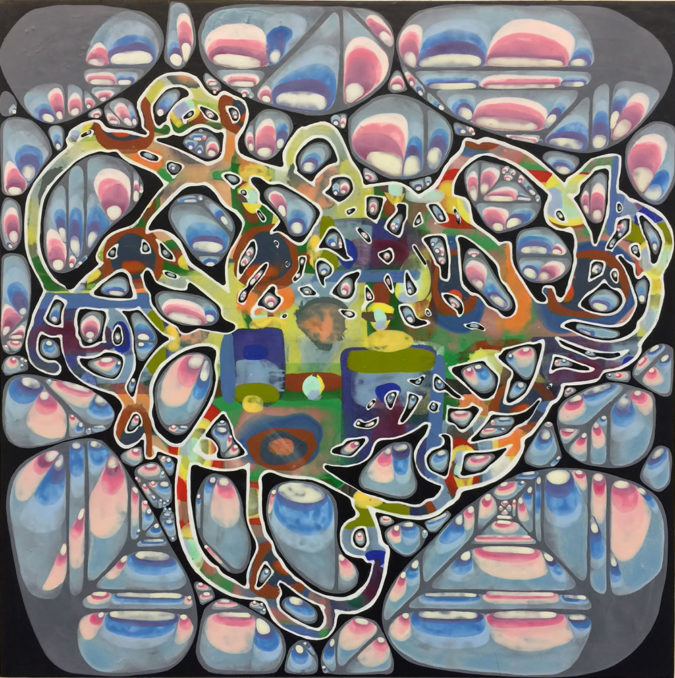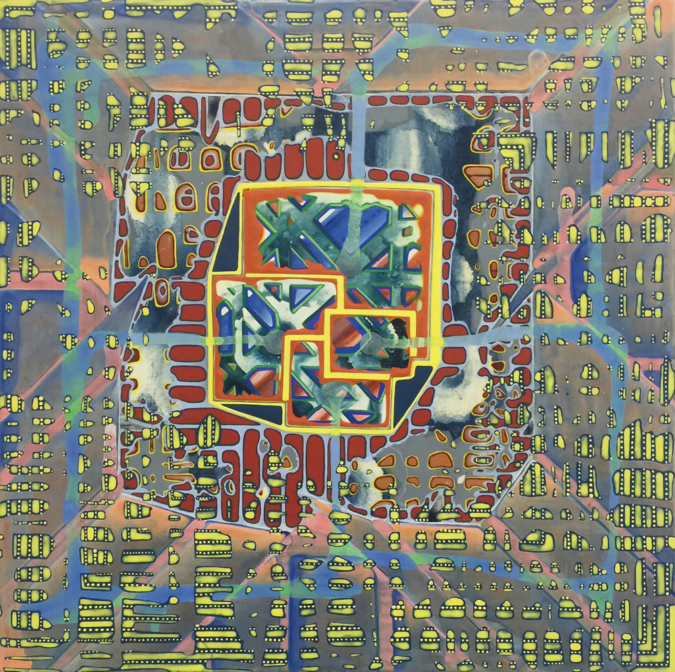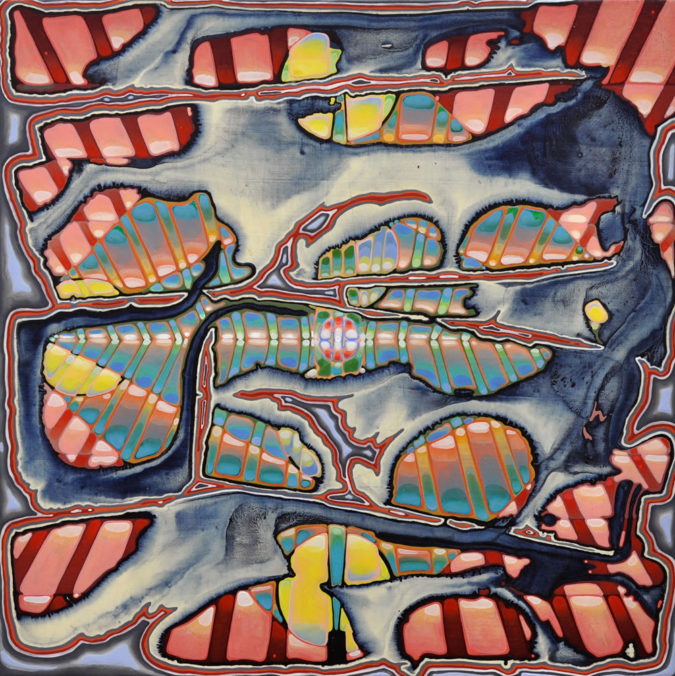Sarah Walker
Sarah Walker received her BFA from California College of the Arts and an MFA from the University of North Carolina, Chapel Hill. Recent solo exhibitions include, Space Machines, Pierogi, Brooklyn, NY, Eyefinger, Gregory Lind Gallery, SF, CA as well as the following group exhibitions: I Am The Cosmos, New Jersey State Museum, Trenton, NJ; The 185th Annual: An Invitational Exhibition of Contemporary American Art, National Academy Museum, New York, NY; and Big Bang! Abstract Painting for the 21st Century, DeCordova Museum, Lincoln, MA. Walker’s collections include Museum of Modern Art, Milwaukee Art Museum, Neuberger Museum, DeCordova Museum, and Weatherspoon Art Museum. She is a 2011 Joan Mitchell Foundation Grant recipient, and has been featured in publications such as Art in America, Art News, Boston Globe, Los Angeles Times, San Francisco Chronicle, and Huffington Post. Walker lives and works in Brooklyn, NY.
Question:
Your paintings often suggest both a microcosmic world and the cosmos. The tiniest and the most immense of places are denoted with multiple grids and repeating patterns that morph, recede and then are reframed with transmuted colors. A seemingly infinite sequence of windows onto disparate patterns and spaces alludes to endlessness. Size appears to recede and expand simultaneously. Your method is physical and your paintings are found. Your process takes place very much on a human scale. Can you talk about the relationship between the tangible making and intangible implications of your finished paintings?
Answer:
For me painting materializes the immaterial. I’ve got to literally realize ideas to make sense of them. I know that multiple dimensions exist concurrently however I’m able to perceive only one at a time. Making a painting through time in multiple layers of different kinds of space fused together into one multifaceted surface atomizes my mind in just such a way that I can climb over my own limitations and experience something I’m not wired for, and then to find it in the world around me.
For example I’ve read that discoveries in physics describe an entanglement situation where all points in time and space are connected to all other points. Try to make an image of that! It is so unimaginable that it needs another path to make it legible. There’s a giddy perversity in pursuing barely grasped ideas through a creative process using viscous substances I push around with the end of a stick.
Along with making the unfathomable visible, a painting itself acts as physical evidence of invisible forces. In this regard the recently “discovered” quasicrystal is a great metaphor. An unthinkable object with a symmetry forbidden to crystals was somehow hypothesized then created in a lab, then in multiple labs. My fascination with this crystal is that it operates in another dimension of symmetry and it straddles both crystalline and liquid states. Since its discovery the quasicrystal has now actually been found in a meteorite. Where next?
Complexity generators – this is a way of thinking about what I’ve been making in my studio. How they’re made and what they do place them at the terrestrial fulcrum touching multiple spatial domains. They’ve got extreme visual density made of accumulated intersecting layers. These paintings emit a gravitational field that pulls in associations and assembles them into a new kind of symmetry, a forbidden symmetry of seeing from multiple perspectives at once.








